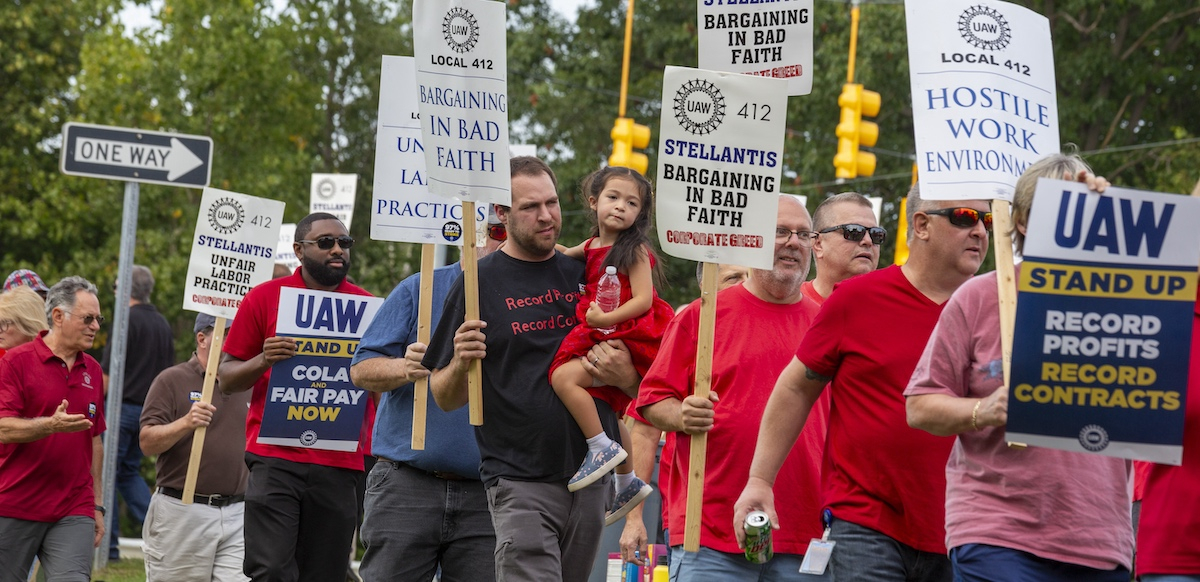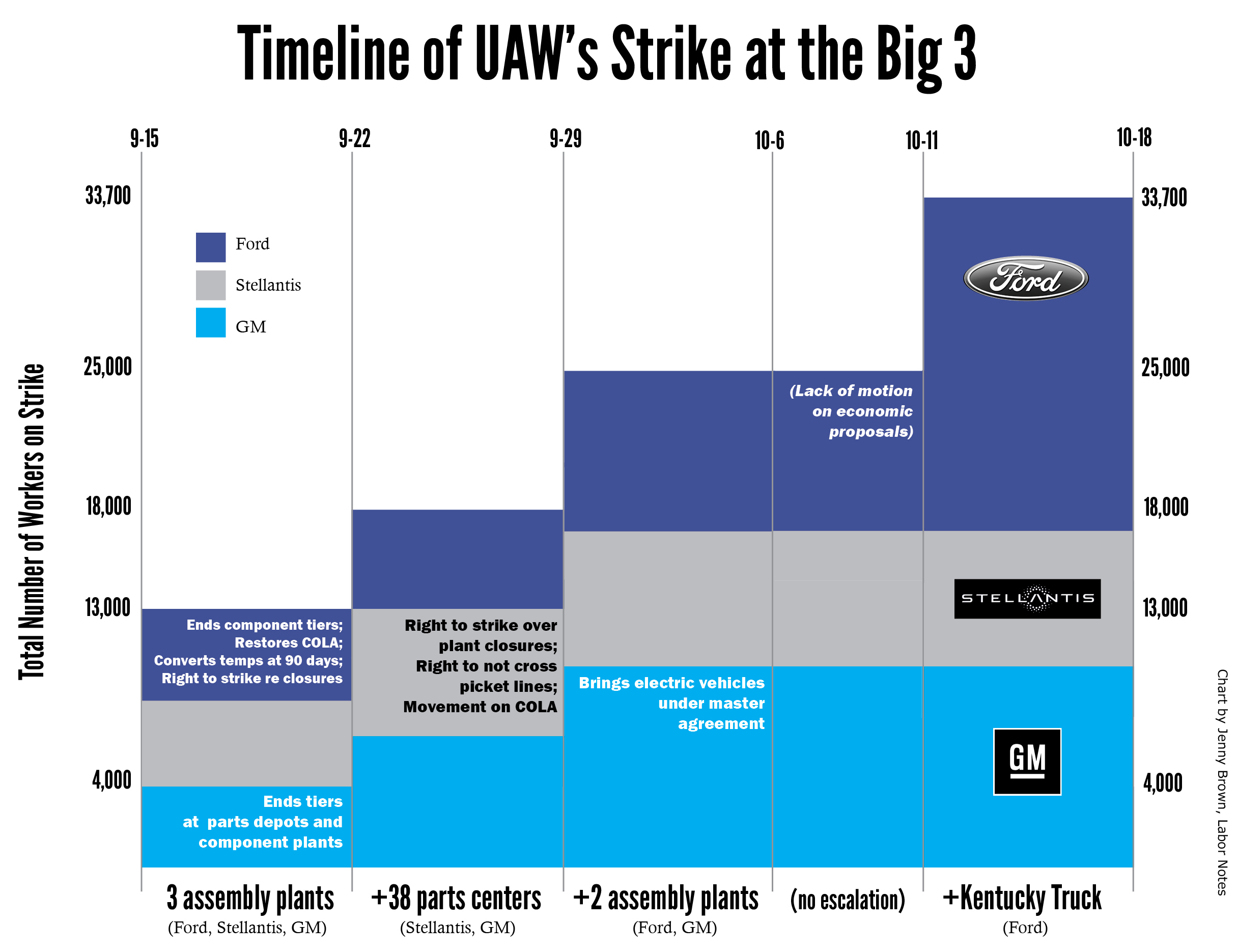It’s Working: Auto Workers’ Strike Strategy Is Forcing the Big 3 to Pony Up

The UAW’s strategy is working. Photo: Jim West, jimwestphoto.com.
The Auto Workers (UAW) have thrown the Big 3 on the back foot.
For the first time in recent history, the union is playing the automakers against each other—departing from its tradition of choosing one target company and patterning an agreement at the other two.
And its gradually escalating Stand-Up Strike strategy has multiplied the pressure that can move the companies off the dime.
Every Friday for four weeks, the CEOs waited with bated breath for UAW President Shawn Fain to announce strike targets.
Two Fridays in a row, one company moved on major bargaining issues just minutes before workers were scheduled to walk out.
On September 29, Stellantis was spared—after frantically calling the union with a new offer.

And on October 6, the UAW was in gear to tap 5,000 members at the General Motors assembly plant in Arlington, Texas. At the eleventh hour, GM agreed to put battery manufacturing facilities for electric vehicles into its national union contract. The plant stayed unstruck.
CHANGED THE RULES
The Stand-Up Strike strategy draws inspiration from an approach known as CHAOS (Create Havoc Around Our System), first deployed in 1993 when Alaska Airlines flight attendants announced they would be striking random flights. The unpredictability drew enormous media attention and drove management up the wall. Meanwhile the union was able to conserve its strength and minimize risk; it only actually struck seven flights over a two-month period, but Alaska had to send scabs for every plane, just in case.
This year, the auto companies miscalculated where the UAW was going to strike first, stockpiling engines and shipping them cross-country to the wrong facilities. Auto workers relished the self-inflicted supply chain chaos.
Now, lest the companies get settled into the every-Friday routine, the union has switched it up again.
Without warning on a Wednesday afternoon, October 11, after Ford failed to move on its economic proposal, the UAW shut down Ford’s vast Kentucky Truck Plant, which generates $48,000 in revenue per minute.
“They thought they figured out the so-called rules of the game,” said Fain on Facebook Live. “So we changed the rules. Now there’s only one rule: Pony up!”
Fain has made a point of wearing camo on the picket line, a nod to guerrilla tactics the union is deploying. Members at the not-yet-struck plants are standing up at work by refusing voluntary overtime.
GO THE DISTANCE
The union is winning the P.R. war too. A CNN poll found that 76 percent of Americans stand with auto workers, while just 23 percent support the car companies.
“The workers win,” whimpered Jim Cramer, the corporate mouthpiece who hosts CNBC’s “Mad Money.”
The companies are eager to bring the strike to a close. “We can stop this now,” said Bill Ford, the company’s executive chairman, in a news briefing on October 16. “We need to come together to bring an end to this acrimonious round of talks.”
He called for the union to partner up against nonunion competitors, throwing in a note of national chauvinism for good measure: “It should be Ford and the UAW vs. Toyota and Honda, Tesla, and all the Chinese companies that want to enter our home.”
“It’s not the UAW and Ford against foreign automakers,” Fain retorted in a reply statement. “It’s autoworkers everywhere against corporate greed… Workers at Tesla, Toyota, Honda, and others are not the enemy—they’re the UAW members of the future.”
Unlike their employers, the strikers are in no hurry; they’re ready to go the distance.
“We’ll be out here deep-frying turkeys if we need to be,” said Sean Farnan at Ford Assembly in Wayne, Michigan. “We’ll be singing Christmas carols if we have to be out here then.”







